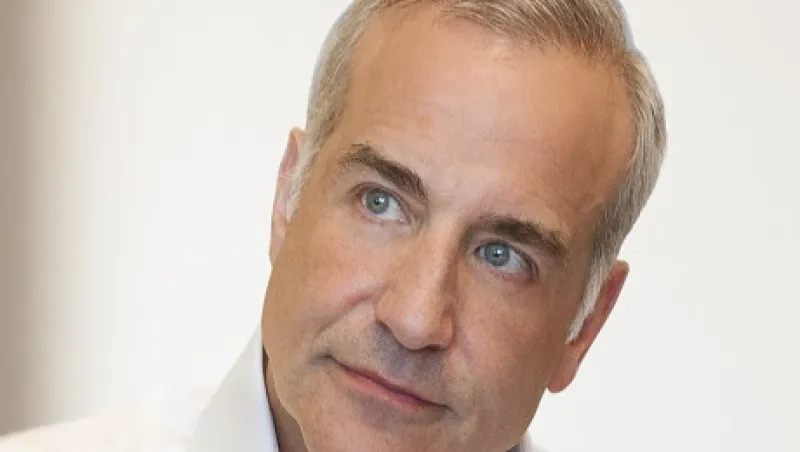Achieving adequate portfolio diversification is never easy, but current macroeconomic conditions are testing the mettle of even the most experienced investors. Eric Upin, CIO of Menlo, California–based investment firm Makena Capital Management, uses his skills as a practitioner of multiasset, endowment-style investing to help the firm’s clients — endowments, foundations, sovereign wealth funds and family offices — navigate global markets. The 51-year-old Chicago native honed his skills in the same role at Stanford Management Co. and joined Makena in 2009, four years after the investment firm was founded by Michael McCaffery, SMC’s former president and CEO, and two of Upin’s SMC colleagues. All investors want stellar returns, but they’re “often unaware of the true underlying risks,” Upin says. Makena relies on the combined talents of its team to help its investors — which include sovereign wealth funds Abu Dhabi Investment Authority, Australia’s Future Fund and Government of Singapore Investment Corp., according to public sources — rationalize the complexities of asset classes, geographies and regulatory jurisdictions. Upin recently spoke with London Bureau Chief Loch Adamson about the intricacies of global endowment-style investing and the biggest challenges that lie ahead.
What risks are of the greatest concern to global investors?
The No. 1 risk in the world that we see investors wrestling with is the potential impact of central banks’ policy response as they’ve tried to combat the deflationary forces of the financial crisis. We’ve seen unprecedented quantitative easing, fiscal bailouts, direct bond-buying and zero percent interest rates. All of those actions — even though they’ve been undertaken for the greater economic good — may have unintended consequences. We don’t yet know what the side effects are going to be on the value and pricing of assets. The biggest risk is that as normal as everything looks now, those policy responses may have created a mirage, or even a set of mirages, that could dissipate quickly.
How has your approach to diversification evolved over time?
We would argue that there are substantially more investable asset classes and geographies to consider today than there were 20 or 25 years ago, so the level of complexity is much greater. Just in terms of geographies, we now consider a much wider range — and if you’re investing with a 20-year or as much as a 50-year time horizon, how do you determine your China strategy, for example? What does it take to develop a clinical, balanced perspective on investing in the country? What asset classes do you use? Even if you manage to figure that out, how do you approach India or Latin America? In the past, emerging markets constituted perhaps 5 to 7 percent of an institutional portfolio; granularity is now much more important because these allocations can account for as much as 15 to 25 percent.
Have investable strategies proliferated too?
With financial innovation opening up more strategies and substrategies, and with the proliferation of alternatives, there is a wider universe of investable strategies and exposures today. Investors have access to a range of different parts of a company’s capital structure, and they can look at different ways of accessing investment streams, such as those from real estate, farmland and timber assets too. They have more choices available to them, but they also have to think harder about how much they want to allocate to which strategy and how best to access those investments. The challenge is compounded for large institutions because many of these strategies are fairly new; we don’t have 50 or 100 years of trading history and data on how some of these types of investments perform. There isn’t a de facto set of blueprints for how to set up your portfolio.
How do institutions approach global multiasset-class investing?
It’s all about asset allocation, manager selection and risk management. Global multiasset-class investing is a team sport, whether you’re an endowment, sovereign wealth fund or foundation. When you’re investing around the world, trying to bring professionals together to make judgments such as whether you should be overweight or underweight Europe, real estate or other asset classes, the more smart people you can bring into the tent who do what you do — and who can help provide opinions and spark ideas — the better.
Where do you see opportunities?
We like emerging markets. It’s a consensus view, but it’s very investable. We’re seeing rapid urbanization and rising living standards. Most important, we’re seeing rising GDP per capita in many of these markets. Those three elements signal what could be the beginnings of consumption-oriented economies that are less dependent on exports to developed markets, which are growing much more slowly than they did in the past. That evolution is investable if you have a long-term, multidecade view, and we’re seeing opportunities in industrial supply-chain logistics, infrastructure, commercial real estate and housing, not to mention businesses that will become part of the consumption economy in these markets.
What are the key qualities of a good equity investment?
In the end it’s really about owning businesses with strong cash flows, dividends, pricing power and the human skill to gain market share over competitors. These are qualities of good businesses that can prosper even if the economic environment is relatively low-growth. And stocks can do very well in low-growth environments. These are some of the reasons why we see a strong argument in favor of private equity.
What other asset classes interest you?
We believe there is value in owning outstanding real estate assets, which can collect rent and gain value over time, particularly if they’re held for a very long time. There can be particular value in identifying distressed, dilapidated or poorly managed real estate projects that, with human intervention, can become very high-quality real estate assets and command higher rents, and realize a significant change in value. Finally, we also see value in owning outstanding real assets in energy and commodities, including farmland and timber.
Have your investors’ attitudes toward risk changed?
Prior to the crisis, I think there was a strong view among sovereign wealth funds and endowments that they could handle a bumpy ride and withstand short-term losses because they invest for the long term. They measure their investment horizons in multiple decades, typically 20 to 40 years. But after 2008, they recognized that although they say they can handle anything, actually going through one of those periods is pretty jarring. The crisis tested the cohesiveness of many investment teams and the strength of the governance between boards versus their teams. I think there are limits to how much turbulence the air-traveling public can tolerate, even if they talk tough on the ground.
What was the biggest surprise to sovereign wealth funds in the wake of the crisis?
These organizations do have liabilities, even though they’re investing for the long term. They are accountable to current generations. They don’t have the freedom to bury their money in the ground and then unearth it 50 years later to see how it’s grown. They have liquidity risks, liability risks. Those risks need to be considered carefully and measured, because no one can assume that these diverse asset classes are going to give you returns exactly when you need them.
What is your view on inflation?
Here in the U.S. we’ve issued tremendous amounts of debt over the past ten years — especially since the financial crisis. That debt will ultimately have to be reduced, ideally through growth, but more likely gradually through a combination of inflation, currency devaluation, higher taxation and continued negative real interest rates. We’re not sure which of those scenarios will ultimately prevail, and the timing is uncertain.






